- Home
- H A CULLEY
The Path to the Throne
The Path to the Throne Read online
THE PATH TO THE THRONE
By
H A Culley
Part One of the Robert the Bruce Trilogy
Published by Orchard House Publishing
First Kindle Edition 2014
Text copyright © 2014 H A Culley
The author asserts the moral right under the Copyright, Designs and Patents Act 1988 to be identified as the author of this work.
All Rights Reserved. This book may not be reproduced in any form, in whole or in part, without written permission from the author.
Cover image by permission of Dreamstime.com ©
TABLE OF CONTENTS
The Origins of the Wars of Scottish Independence
List of Principal Characters
Prologue – Christmas 1285
Chapter One – Small Beginnings - 1286
Chapter Two – William Wallace – Spring 1287
Chapter Three – The Competitors – 1290
Chapter Four – The Reign of King John – 1292 to 1295
Chapter Five – Toom Tabbard – 1296
Chapter Six – Stirrings of Revolt – 1296 to 97
Chapter Seven – The Battle of Stirling Bridge – 11th September 1297
Chapter Eight – The Battle of Falkirk – 22nd July 1298
Chapter Nine – The Disputed Land – 1298 to 1300
Chapter Ten – The Hammer of the Scots – 1301 to 1305
Chapter Eleven – The Making of a Legend – August 1305
Chapter Twelve – Murder in the Abbey – February 1306
Chapter Thirteen – The King of Summer - Spring 1306
Author’s Note
The Origins of the Wars of Scottish Independence
This is the first of three novels about the life and times of Robert de Brus, more commonly known as Robert the Bruce, and his key role in the Wars of Scottish Independence. The wars between England and Scotland ran sporadically from 1296 to 1328 and from 1332 to 1357. King Robert died in 1329 and this trilogy covers the background to the conflict and the first war up to Bruce’s death.
The Path to the Throne covers Robert’s initial ambivalence to the Scottish cause, his decision to fight for Scottish independence and the reasons behind it, and his coronation at Scone on 25 March 1306 and the immediate aftermath.
The second book, The Winter King, covers the eight years between autumn 1306 and victory over the English at Bannockburn on 24 June 1314. This is a period of small victories, severe defeats and guerrilla warfare when King Robert struggled to keep the flame of Scottish independence alight.
The final book in the trilogy, After Bannockburn, is set in the last fifteen years of Robert’s reign when he strove to unite Scotland under his rule .
The Bruce family are thought to have originated in Brix near Cherbourg in Normandy and to have come to England with William the Conqueror in 1066. Robert de Brix was granted manors in Yorkshire and County Durham. His son was granted land in Annandale by David I, King of Scots, and this was inherited by his second son, Robert de Brus; the first son, Alan, inheriting his English lands. Robert also inherited some manors in England. His grandson, another Robert, married a daughter of David, Earl of Huntingdon. She was a niece of William the Lyon, King of Scots, thus establishing his descendants’ claim to the throne.
With the death of Alexander III of Scotland in 1286 without a male heir, the throne went to the three-year old Margaret, Maid of Norway, the granddaughter of the Scottish King. In 1290 the Guardians of Scotland, who had been appointed to govern the realm during the young Queen's minority, drew up a marriage contract between Margaret and the then five-year old Edward of Caernarvon, the heir to the English throne. Although any offspring of this marriage would be heir to the crowns of both England and Scotland, it was agreed that the latter should remain separate and not be part of the English Kingdom.
In September 1290 the young Queen Margaret died in the Orkneys on her way to Scotland in mysterious circumstances, leaving Scotland without an undisputed successor to the kingdom. Edward I of England was asked to decide between various competitors for the Scottish throne in a process known as the Great Cause. One of the strongest claimants was John Balliol, Lord of Galloway, who forged an alliance with the powerful Bishop of Durham, the representative of Edward I in Scotland, and began styling himself 'heir of Scotland’, while another, Robert Bruce, 5th Lord of Annandale, cited his appointment as heir by Alexander II before his son, Alexander III, was born. There were twelve other claimants, all descended from various Kings of Scots, but there only four serious contenders:
· Floris, Count of Holland – descended from David I through his great-granddaughter, Ada.
· John Hastings – also descended from David I through his great-granddaughter, Ada.
· John Balliol - descended from David I through his great-granddaughter, Margaret.
· Robert de Brus - descended from David I through his great-granddaughter, Isabella.
Of these, John Balliol had the best claim on the basis of primogeniture as Margaret was of the senior line. Robert de Brus, grandfather of King Robert I, whose claim was based on tanistry - the Gaelic system for passing on titles and lands - was the closest in kinship as he was Isabella’s son. Balliol was Margaret’s grandson.
When Edward announced his decision as arbiter of the Great Cause and John Balliol was pronounced as king at Berwick upon Tweed in November 1292, it looked as if the struggle for the throne might be over. However, Edward demanded that Balliol recognise him as his feudal superior, describing himself as Lord Paramount of Scotland. He repeatedly undermined Balliol, insisting that all important decisions be referred to him.
The Scots soon revolted against the situation and King John Balliol was forced to abdicate by Edward. John was exiled and lived out his days on his family manor at Hélicourt in France. A new panel of Guardians was appointed by the Scots nobles at Stirling in July 1295 and they went on to conclude a treaty of mutual assistance with France - known in later years as the Auld Alliance.
In retaliation, Edward I invaded. The Wars of Scottish Independence had begun.
There are certain words and names which might be unfamiliar to the reader. I list a few of these below:
Ague - A medieval term for a febrile condition in which there are alternating periods of chills, fever, and sweating.
Braies – underwear worn under hose. They could be made of leather, wool, cotton or linen,.
Burn – Scottish term for a stream.
Byre – Scottish term for a cowshed.
Caparison - A cloth covering for a war horse. It was divided in two at the saddle and usually covered the horse from neck to rear, reaching down to the fetlock. It usually displayed the knight’s heraldic achievement (often misnamed coat of arms) but not always. Later caparisons covered the horse’s head as well.
Chausses - chain mail leggings covering the legs exposed below the hauberk.
Coif – The chain mail hood that was worn under the helmet or helm, and lined in leather or quilted cotton to protect the head.
Conroi - a troop of cavalry, usually knights.
Constable - person in charge of a castle in the absence of its lord. In particular, he was responsible for its defence.
Courser – a type of war horse, more common and less expensive than the destrier and preferred by some as they were lighter and faster whilst still being quite strong.
Destrier - the finest and strongest type of warhorse. These horses were usually stallions, bred and raised from a foal specifically for use in war. They were comparatively expensive.
Gambeson - a heavily quilted coat worn under the outer defence of chain mail to prevent it from chafing, or else worn on its own where it gave some protection from cuts and arrows.
Galloglass - armoured foot soldiers who served primarily as bodyguards to Celtic chieftains. They were hand-picked for their strength and massive size, and they would usually carry a battle axe or a halberd. Bands of Galloglasses were also available for hire as mercenaries.
Halberd - an axe head and a spike mounted on a wooden shaft around five feet long.
Hobelars- a type of light cavalry, or mounted infantry, used in Western Europe during the Middle Ages for skirmishing. They originated in 13th century Ireland, and generally rode light and agile horses or ponies.
Jennet - a smooth-gaited type of horse known for its presence, style and smooth ride.
Kern - Irish or Scottish light-armed foot soldiers. A kern would carry a small round shield of wood called a targe and either a sword or bow and arrow.
Knight’s Fee - an estate or manor held by a tenant in exchange for which he provides one knight, usually himself, to serve his lord for (normally) forty days per year and to serve under him in time of war.
Mangonel – A type of large catapult, smaller that a trebuchet. Mangonels threw projectiles on a lower trajectory and at a higher velocity than the trebuchet. When loaded with a number of small rocks it could be devastating when used against troops in the open.
Mark – A unit of currency in common use in the Middle Ages. It was equivalent to two thirds of a pound Stirling.
Mesnie - the knights forming the regular military component of a noble’s household.
Mormaer - regional or provincial ruler in the early medieval Kingdom of the Scots. In theory, although not always in practice, a Mormaer was second only to the King of Scots. The title was gradually replaced by the Anglo-Norman title of Earl.
Page – A young boy, usually of noble birth, who served as a messenger and personal servant in a noble’s household. At this stage most started their basic military training and learned to ride. They were aged between eight and thirteen.
Palfrey - the most expensive and highly-bred type of riding horse during the Middle Ages, sometimes equalling the knight's destrier in price. Consequently it was popular with nobles, ladies and wealthy knights for riding, hunting and ceremonial use.
Picquet – a group of sentries posted between a camp and the enemy to give warning of an attack, especially at night.
Quintain – Tilting at the quintain on horseback was a test of skill with a lance and of agility. The rider aimed to ride at the target as fast as possible, hit the centre of the target with his lance as hard as possible, and then avoid the bag of sand which swung round as the target rotated away. Missing the target, or not striking it cleanly, was treated with loud peals of derision, as did being knocked from your horse by the bag of sand.
Rouncey - an ordinary, all-purpose horse. They were used for riding, but could also be trained for war. It was not unknown for them to be used as pack horses.
Scutage - the payment under the feudal system which allowed a knight to "buy out" of the military service which was due to his overlord in return for his tenure of land, known as a knight’s fee (see above).
Serjeant - a professional soldier who ranked between a knight and a man-at-arms. Most were mounted though the term was also used for an armoured spearman on foot.
Sheriff - a senior royal official responsible for keeping the peace throughout a shire or county and to collect taxes on behalf of the king.
Spence – Scottish term for larder.
Spencer – The official in charge of the spence in a medieval castle. Spence was the Scottish term for larder and was where the food was kept under lock and key. The spencer doled out what was required to the cook and had to account to the butler for everything used.
Squire – the personal servant of a knight whilst they were undergoing military training. Most were knighted on becoming adults at twenty-one, though some became serjeants.
Tenant-in-Chief – a noble or churchman who holds his lands directly from the king in return for military service when required.
Trebuchet - a type of large catapult which was used to hurl heavy rocks over a significant distance.
Vassal - A person who holds land from a feudal lord and receives protection in return for homage and allegiance.
Villein - a peasant personally bound to his lord, to whom he paid dues and services, sometimes commuted to rents, in return for his land.
List of Principal Characters
In order of appearance
Historical characters are shown in bold type
Edward Longshanks – King of England, son of Henry III.
Alexander III – King of Scotland.
Margaret, Maid of Norway – Alexander’s granddaughter and heir. Daughter of King Eric II of Norway and Margaret of Scotland.
Robert Burnell – Bishop of Bath & Wells. Lord Chancellor of England from 1274 to 1292.
John FitzGilbert – Illegitimate son of Gilbert d’Umfraville, Earl of Angus.
Robert Bruce – Page at Lochmaben Castle. Future Earl of Carrick and King of Scots.
Gavin Stewart – Page at Lochmaben Castle. Friend of Robert and son of Sir Andrew Stewart.
Robert de Brus – Lord of Annandale and grandfather of Robert Bruce. Competitor for the throne.
Robert de Brus – Earl of Carrick and father of Robert Bruce.
Roger Comyn – Nephew of the Lord of Badenoch.
Sir Andrew Stewart – Brother of the High Steward of Scotland and Gavin’s father.
Malcolm Douglas – A page at Renfrew.
William Wallace – Sometime Guardian of Scotland and leader of the first revolt against English rule.
Sir Alan Wallace of Ellerslie – his father.
Malcolm and Findlay Cowan – Twin brothers; friends of William Wallace since boyhood.
Mary Cowan – Their sister and the lover of William Wallace.
James Stewart – High Steward of Scotland.
Sir William Heselrig - English knight. Later Sheriff of Clydesdale.
Domhall mac Uilleim - Earl of Mar, supporter of Robert Bruce.
Isabella of Mar – Domhall’s daughter and first wife of Robert Bruce,
Marjorie Bruce – Their daughter. Later wife of Walter Stewart, High Steward of Scotland.
John Comyn – ‘The Red Comyn’, Lord of Badenoch and leader of the faction supporting John Balliol.
John Comyn – Earl of Buchan, cousin of the Red Comyn.
Robert Wishart – Bishop of Glasgow and ally of Robert Bruce.
Thomas Randolph - Earl of Moray, supporter of Robert Bruce.
Sir William Douglas the Bold - Lord of Douglas and Governor of Berwick upon Tweed.
James Douglas – Called the Black Douglas. Son of Sir William Douglas. Later Lord of Douglas and one of Robert Bruce’s closest friends.
Sir Neil Bruce – Robert Bruce’s brother and supporter, second son of Robert de Brus.
Sir Edward Bruce – Another brother, later Earl of Carrick and High King of Ireland.
Thomas Bruce – Another brother, fourth son of Robert de Brus.
Alexander Bruce – Youngest brother, later Dean of Glasgow.
William Lamberton – Bishop of St. Andrews, Primate of Scotland.
John de Warenne – Earl of Surrey, English Lieutenant of Scotland.
Sir Hugh Cressingham – English Treasurer of Scotland.
Elizabeth de Burgh – Daughter of the Earl of Ulster, second wife of Robert Bruce, later Queen of Scotland.
Sir John Menteith – Constable of Dumbarton Castle.
Coira – Elizabeth be Burgh’s maid.
Sir Christopher Seton – Friend and supporter of Robert Bruce.
John MacDougall of Lorne – Highland chieftain and Lord of Argyll. Supporter of the Comyns.
Duncan MacDonald – Highland chieftain and Lord of Rannoch. Ally of Robert Bruce.
Prologue – Christmas 1285
Edward Longshanks was an impressive man for someone who had just turned fifty.
As his nickname indicated, he stood head and shoulders above most men and had piercing ice-blue eyes that seemed to see into the depths of your soul. At a time in their lives when most men would be slowing down as old age approached, Edward was known for his energy and vitality.
He had come to the throne of England at the age of thirty three and in the past seventeen years he had restored the power of the monarchy after the revolt of Simon de Montfort; then he had gone onto conquer Wales. However France, where he was perpetually in conflict with the French King Philip over Gascony, remained a problem, as did Scotland on England’s northern border.
He looked once more at the letter in his hands. The Scots had started to raid across the border once again after a period of relative peace and stability. This time they had crossed the border at Carter Bar and raided along Redesdale. Before retreating whence they had come, they had captured Otterburn Castle and burnt it to the ground. Redesdale belonged to Gilbert d’Umfraville, Earl of Angus. Despite his Scottish earldom, most of Gilbert’s lands were in Northumberland and Yorkshire and he was firmly in the English camp. He had appealed to Edward for permission to launch a retaliatory raid across the border into Liddesdale. Edward sighed. He was annoyed that cross border conflict had started up again and came to the conclusion that it was time he put a stop to it once and for all. Perhaps it would be best to apply the Welsh solution to Scotland as well and incorporate it within his realm.
Circumstances had certainly provided an opportunity if he moved quickly. Alexander III, King of Scots, had been widowed two years previously and both his sons had died before him. His daughter, Margaret, who had married Eric of Norway, was also dead, but her daughter, another Margaret, known as the Maid of Norway, was now Alexander’s heir. It was obvious that a foreign princess, who was still a baby having been born in 1283, would not be able to hold such as disparate kingdom together or, more importantly, hold the avaricious Edward Longshanks at bay.

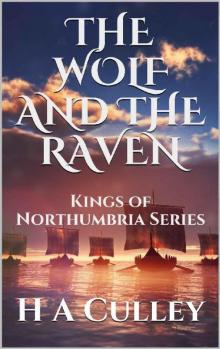 The Wolf and the Raven
The Wolf and the Raven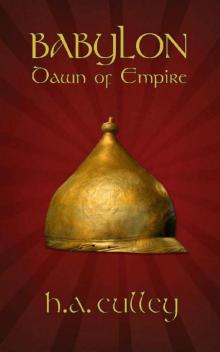 Dawn of Empire
Dawn of Empire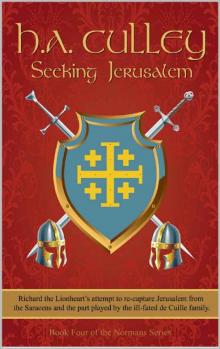 Seeking Jerusalem
Seeking Jerusalem The Strategos
The Strategos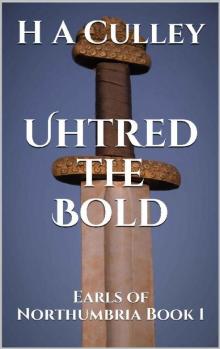 Uhtred the Bold
Uhtred the Bold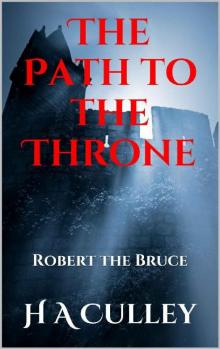 The Path to the Throne
The Path to the Throne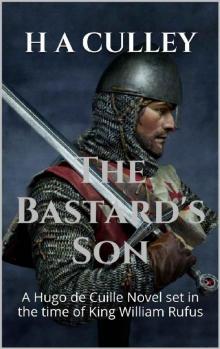 The Bastard's Son
The Bastard's Son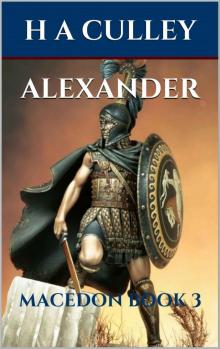 Alexander
Alexander The Great Heathen Army
The Great Heathen Army The Sacred War
The Sacred War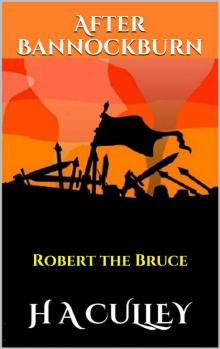 After Bannockburn
After Bannockburn Caging the Lyon
Caging the Lyon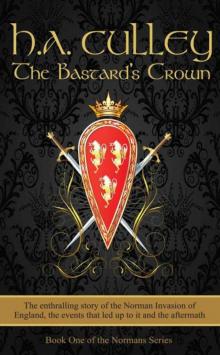 The Bastard's Crown
The Bastard's Crown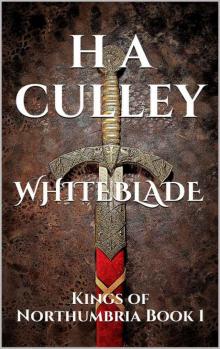 WHITEBLADE
WHITEBLADE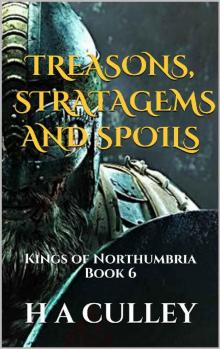 TREASONS, STRATAGEMS AND SPOILS: Kings of Northumbria Book 6
TREASONS, STRATAGEMS AND SPOILS: Kings of Northumbria Book 6 THE POWER AND THE GLORY: Kings of Northumbria Book 4
THE POWER AND THE GLORY: Kings of Northumbria Book 4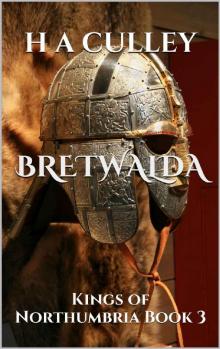 BRETWALDA: Kings of Northumbria Book 3
BRETWALDA: Kings of Northumbria Book 3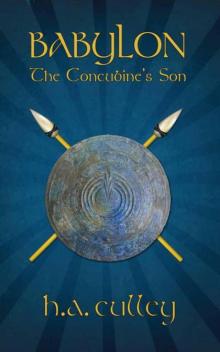 The Concubine's Son
The Concubine's Son The Fall of the House of Æthelfrith: Kings of Northumbria Book 5
The Fall of the House of Æthelfrith: Kings of Northumbria Book 5 TREASONS, STRATAGEMS AND SPOILS
TREASONS, STRATAGEMS AND SPOILS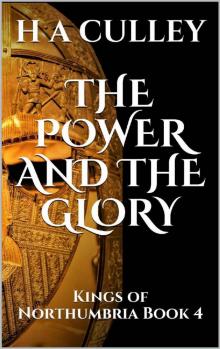 THE POWER AND THE GLORY
THE POWER AND THE GLORY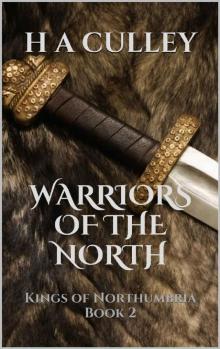 WARRIORS OF THE NORTH
WARRIORS OF THE NORTH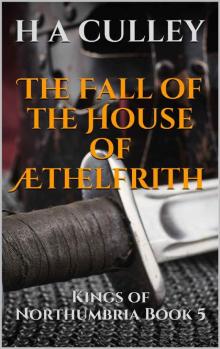 The Fall of the House of Æthelfrith
The Fall of the House of Æthelfrith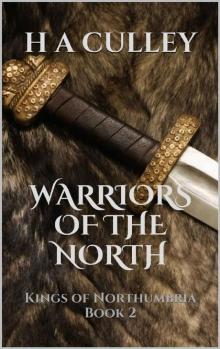 WARRIORS OF THE NORTH: Kings of Northumbria Book 2
WARRIORS OF THE NORTH: Kings of Northumbria Book 2 WHITEBLADE: Kings of Northumbria Book 1
WHITEBLADE: Kings of Northumbria Book 1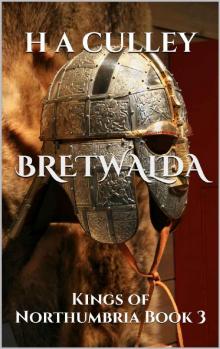 BRETWALDA
BRETWALDA